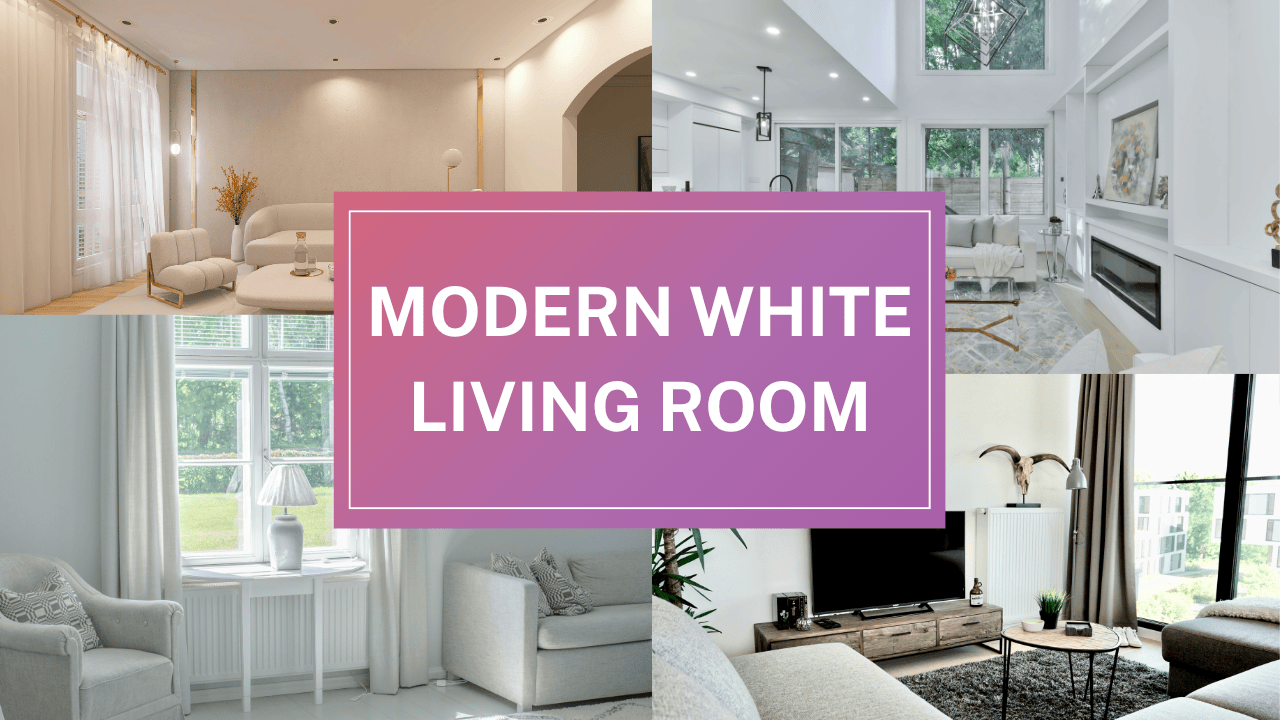Table of Contents
Introduction
A modern white living room is the ultimate epitome of elegance, simplicity and timeless charm.
There is something very refreshing about walking into a room bathed in soft white, it immediately feels lighter, larger and more peaceful.
Choosing a white colour scheme does not mean your living room will look boring or clinical. In fact, white offers the perfect blank canvas for you to create a cosy, stylish, and full of personality space.
Creating a modern white living room that is both bright and beautiful is a balancing act between simplicity and warmth. While white interiors have always been timeless, the latest design trends in 2025 are steering away from cold, stark whites and embracing layered textures, subtle contrasts, and cozy details to make white spaces feel fresh, lived-in, and irresistibly inviting.
In this post, we will tell you how to make a bright and beautiful modern white living room, everything you need to know, from choosing the right colours and furniture to small decor changes that make a huge impact that feels anything but plain.
You will know in this post-
- How to layer textures and add pops of color without ruining the clean vibe
- How to choose the perfect shade of white (yes, there is more than one)
- Which furniture styles and fabrics work best
- Real-world styling tips to keep your space fresh, inviting, and practical for everyday living
Why Choose a Modern White Living Room?
There is just something about white living rooms that never goes out of style. Maybe it is the calm, open feeling they give off or the fact that white works with literally everything. When I started experimenting with home decor around six months ago, I quickly realized how forgiving and flexible white interiors really are.
White gives you a fresh, clean slate to move forward with. It makes rooms seem bigger and brighter, especially if you are working with a small space. Even in a small apartment, white walls and furniture can make everything feel a little more open and airy.

But here is the problem that white can seem too plain or even cold if you are not aware. Think of white as a blank canvas that allows other colors, textures, and materials to blend in.
Some tips I have learned: Layer cozy pieces like woven throws or soft pillows, add texture with a woven rug or wood accents, and don’t be afraid to mix in bold or fun decor pieces to show off your style. Whether you’re interested in modern minimalism, rustic farmhouse charm, or a laid-back boho vibe, white makes it easy to keep everything together without looking cluttered.
Finally, a white living room does not have to be boring. It can be your most comfortable and expressive space, as long as you balance it with warmth and personality.
Embrace the New White, Soft Shades & Layering
Super-bright, clinical white interiors? They have largely been left behind now. Lately, 2025 is bringing a whole new vibe. Think white with depth and nuance. Instead of those icy, sterile shades, people are leaning towards shades like alabaster, soft cream, warm ivory, and even hints of gray. These colors keep things light but up the comfort and style factor.
Layering different tones of white adds depth and warmth to your space. Instead of using the same white paint on every wall, mix shades with different undertones.
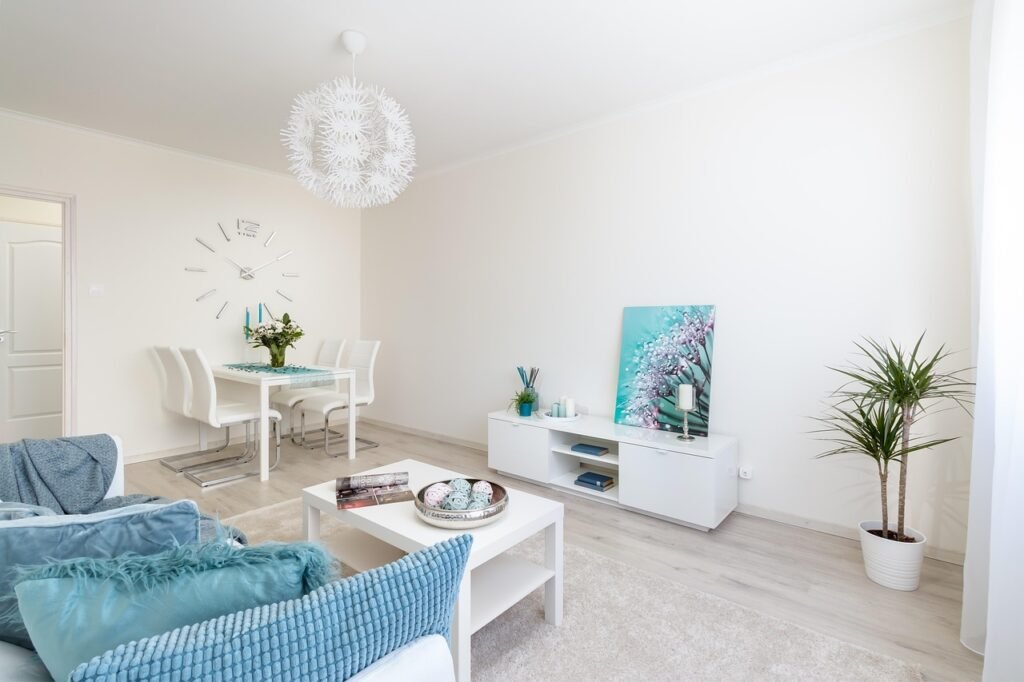
For example, pairing a warm, creamy white on the walls with cooler white trim creates contrast without introducing additional colors. This subtle variation helps define spaces and brings visual interest while keeping the overall look cohesive and calming.
One Another Trick is to be known by all of them, mixing finishes. Matte paint gives a cool, velvety feel, while glossy surfaces bounce light around and add a bit of shine. Combine the two, and suddenly the room feels more alive. A shiny tile fireplace next to soft matte walls? A combo like this draws attention.
And layering is not just limited to color or finishes. Incorporate it into textures and materials, too. A thick wool rug laid over pale wood, or soft ivory curtains floating over textured blinds that is where the space starts to feel intentional, even cozy. These little choices stack up to create a room that is not only bright, but full of cool character..
Add Warmth with Natural Textures
One of the best techniques for warming up a white living room is adding a touch of natural textures. If you do not have them, your room could very well be cold and uninviting, particularly if all the surfaces are reflective and flat. Natural textures add movement, life, and a sense of tactility to a white space.
Wood, linen, jute, rattan, stone, and leather are great to layer over a white space. All of these textures provide organic shapes and tones that look great against a white wall and furnishings. For example, a reclaimed wood coffee table brings a down-to-earth quality, with a woven jute rug beneath your feet adding texture and comfort. Mix rattan chairs, bamboo shades, and clay pottery to give a handmade look that is both fashion-forward and enduring.
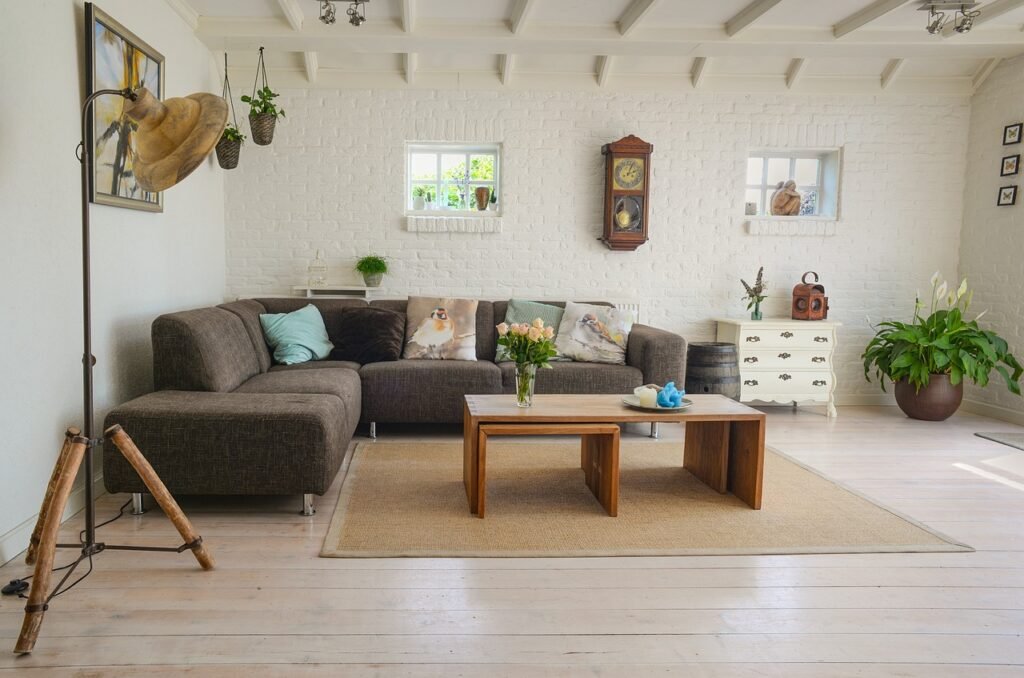
Soft furnishings also have a central part to play. Opt for throw pillows and throws in boucle fabrics, velvet, or chunky knits. They not only provide tactile comfort but also add to the attractiveness of the room. Creating subtle contrasts with permutations of the same color palette creates an easy-on-the-gaze atmosphere rich with depth.
When you have a low budget, you can do it gradually. A couple of wooden picture frames, a handmade knitted pouf, or a linen shade will do the trick. Plants are also a means of adding texture in a very organic way. Their greenery sets differently against a white surface, and their different shapes and sizes will bring movement and softness.
Adding texture to your white living room makes the space cozy and lived-in, instead of empty or stark. It is all about balance and pairing clean lines with organic materials to bring a grounded, harmonious vibe.
Strategic Color Contrasts: Subtle or Bold
The all-white color scheme is an empty canvas that will allow you to play with contrast, necessary if you do not want your living room to look monochromatic or static. With subtle elegance or a bold personality, contrast brings depth, dimension, and balance to your living room.
To maintain a soft, peaceful look, confine your contrasts to neutral colors such as beige, taupe, light gray, and warm browns. These colors add warmth without breaking up the whitewashed base. Bring them in by way of wooden furnishings, tan leather sofas, stone vases, or neutral-hued art. Scandinavian-style minimalism comes to mind: clean, peaceful, and unruffled.
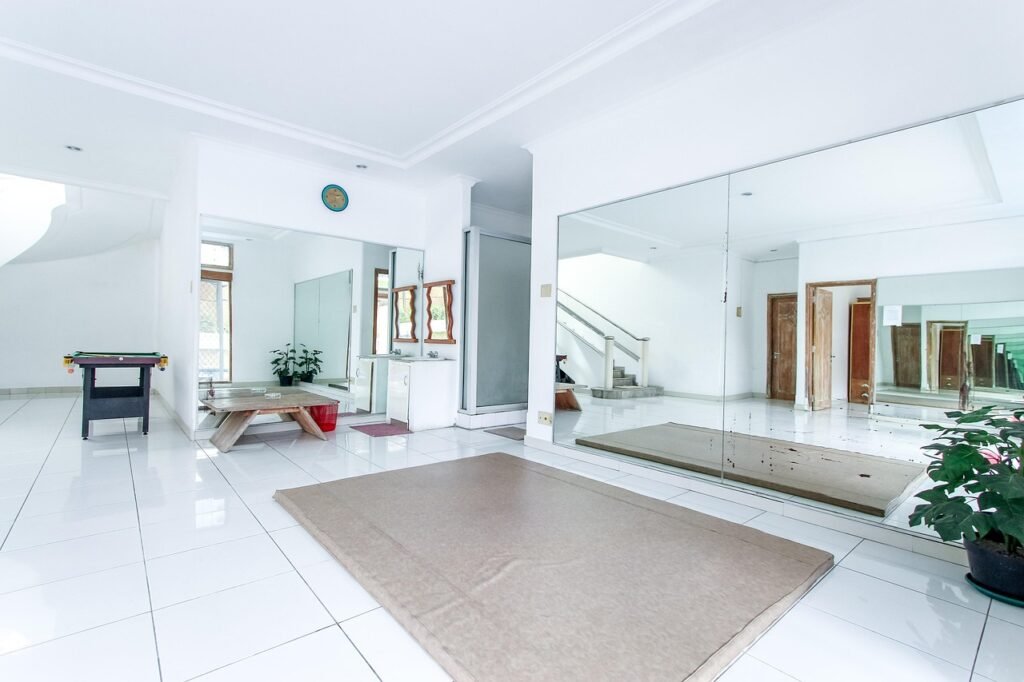
Conversely, if you find yourself attracted to bold, playful interiors, then do not be afraid to add splashes of color. Vibrant blues, emerald green, and mustard yellow will invigorate the room when applied judiciously. The trick is thoughtful placement. Incorporate the colors in throw pillows, bold statement art, or a single armchair pieces that can be easily modified or changed over a period of time.
One such method of adding contrast is by using black or charcoal details. Adding a matte black coffee table, an industrial pendant light, or a dark-framed mirror will anchor the space and make a dramatic statement. Such touches are eye-catching without dominating the room, providing a sleek, contemporary look.
The trick to the effective use of contrast in a white living room is moderation. Too much will upset the tranquillity; too little and the room will be drab. The objective is to find a balance such that contrast enhances the look without fighting with the calm, unified atmosphere of the room.
Mastering Modern Minimalism
Minimalism is a perfect complement to modern white living room design. Yet, it is not a question of stripping things back, it is a matter of carefully selecting the appropriate things that are both functional and beautiful. Minimalism in a white living room focuses on clean, uncluttered spaces, openness, and calmness.
Start by eliminating visual clutter. Avoid over-accessorizing with many distracting objects and emphasize quality rather than quantity. Clear surfaces and invest in multi-purpose furniture like storage ottomans, nesting tables, or inbuilt shelving. Such designs maintain your space’s orderliness and optimize functionality.
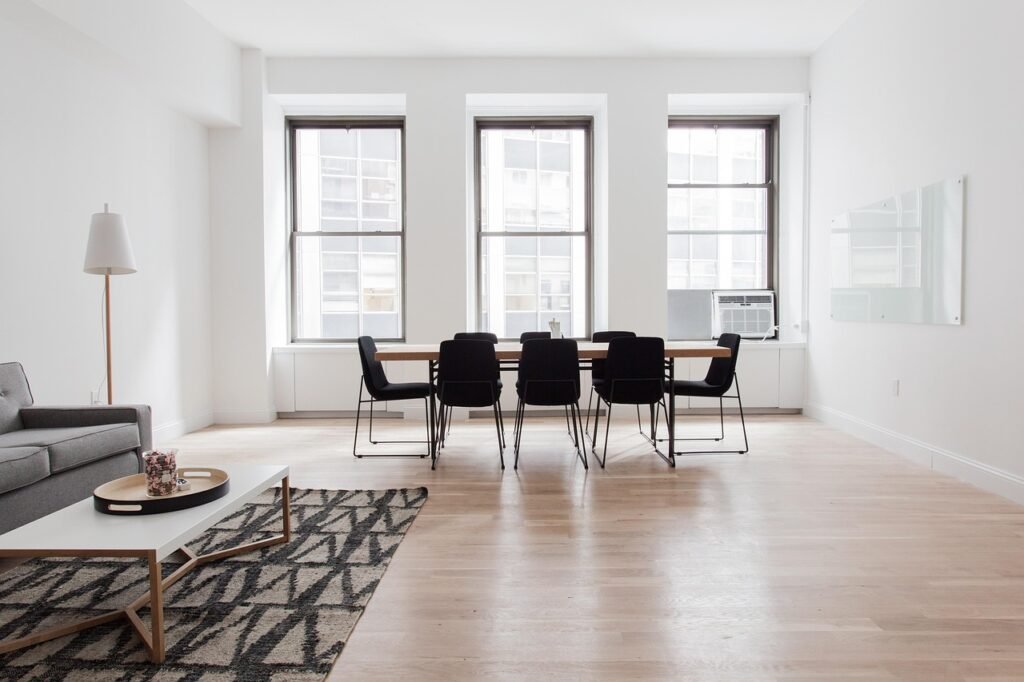
The minimalist style is enhanced by the judicious use of furniture. Opt for simple-silhouette and natural-finish pieces. Mid-century or Scandinavian designs are especially suitable for this space since they are both handsome and functional. A white, low-profile sofa with plush material and tasteful wooden legs is one such addition that contributes comfort without dominating the space.
The decoration must be intentional. Choose one or two showpieces over numerous small accessories. Something large like an especially bold abstract painting, a designer light fixture, or a sculptural vase can say everything in a minimalist space. Allow them to be the star by leaving space for them to breathe.
At long last, minimalist chic does not have to compromise coziness. Add textures and neutral colors to maintain an inviting atmosphere. Blend various fabrics and throw in a touch of soft layers for ultimate coziness. If done carefully, minimalism in a white living room is a tranquil oasis in which everything is purposeful and calming.
Use Texture to Prevent Sterility
One of the biggest pitfalls when decorating a living room with a white theme is creating that cold and hospital-like look. The antidote is adding texture. It adds character and tactile interest to a room that might otherwise be flat and bland. You do not have to make a loud or colored statement with texture; even in a white theme, varied textures can add a sense of warmth and dynamism.
Begin with walls. Forgo plain level paint and opt for subtle wallpapers with texture, decorative paneling, or plaster finishes. Soft-white shiplap or wainscoting can be an elegant touch without breaking the theme. Textured walls cast light differently throughout the day, which keeps the room visually interesting.
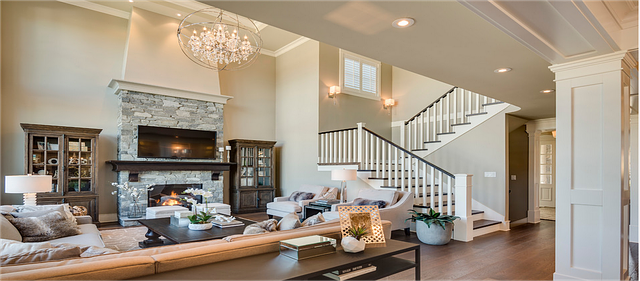
Now, transition to the soft furnishings. Create a cozy atmosphere with a mix of different weights and finishes of fabrics such as linen curtains, knitted throws, velvet pillows, and wool carpets. Pair crisp cotton with smooth chenille, leather with nubby boucle. The pairings provide tactile depth without muddying the palette.
Flooring is an area influenced by the power of texture. A light oak or a textured stone floor in a white living room is grounded and sophisticated. If carpet is your preference, use natural fiber rugs such as jute or sisal to add contrast without adding color. The subtle textures anchor the space.
Texture also adds to the sensory aspect of your space. A throw rug made of something soft encourages you to curl up. A rough-hewn ceramic vase gets your attention. Done well, texture is what gives a white living area a thoughtful, lived-with, and completely one-of-a-kind look.
Light It Up Right: Layered Lighting for Ambience
Lighting can be the make-or-break factor in the ambiance of a modern white living room with a white color scheme. Natural light is your ally, with the disadvantage that it is not available every hour, so it is necessary to layer artificial light. A lighted white space is roomy, cozy, and energetic, whereas a lack of adequate lighting will make it seem cold and flat.
Begin by taking advantage of as much natural light as possible. Utilize sheer curtains or light-filtering blinds to admit sunlight without compromising privacy. If you are creating a new space or are remediating, think about the addition of bigger windows, skylights, or even French doors to fill your space with daylight. Strategic placing of mirrors will also help bounce light and enhance light.
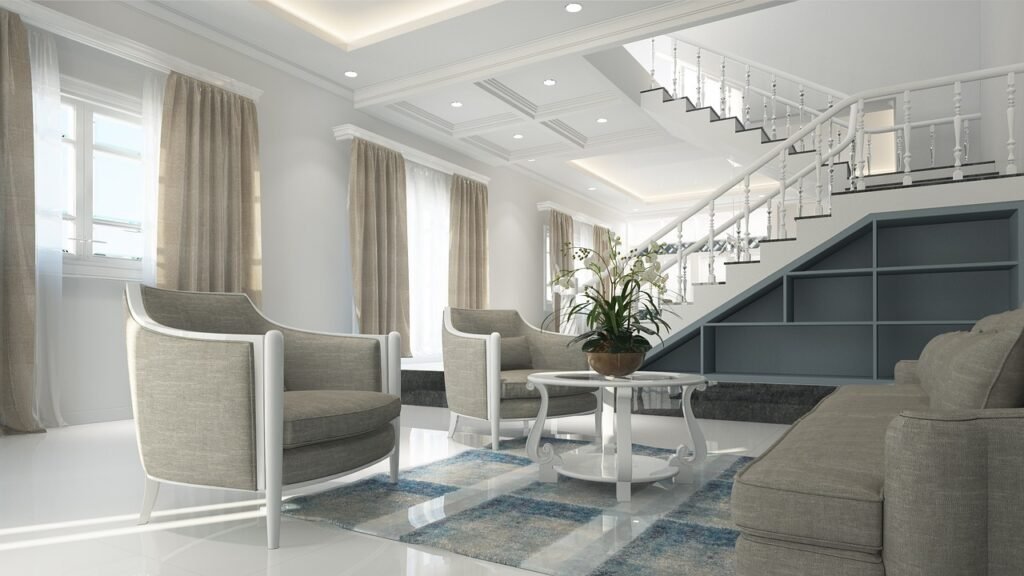
Think in terms of layers with artificial lighting. Ambient lighting is general lighting, overhead lighting, ceiling pendants, or track lighting. Task lighting does something specific, reading lamps, under-shelf LEDs, or floor lighting. And then there is accent lighting, which adds ambiance, wall sconces, table lamps, and even fairy lighting.
Use dimmers to set the mood. At night, a dimmed glow creates a cozy, welcoming ambiance for a white space. Warm white bulbs instead of cool can ensure a soft glow. Decorative lighting, like a dramatic chandelier or designer floor lamp, can serve as a focal point that not only adds purpose but also style.
In dimmest nooks and crannies, think about wall sconces or up-lighting to keep the light from casting hard shadows. Remember, with a white room, light not only lightens but it plays off every surface and brings your room to life in varying ways throughout the day.
Choose the Right Furniture and Accents
Furniture in a modern white living room is not only functional, but it also serves to define the look. Because the color scheme is so minimalist, the shapes, material, and arrangement of your furniture are even more prominent. The appropriate furnishings will complement your design aims, whether you are going for modern, rustic, boho, or eclectic.
Begin with scale. In compact rooms, use slender, low-slung furnishings that do not dominate the room. Modular sofas, nest tables, and leggy chairs keep things light. In larger rooms, you have room to be bold; oversized coffee tables, sectional sofas, and showy chairs can define the room beautifully.
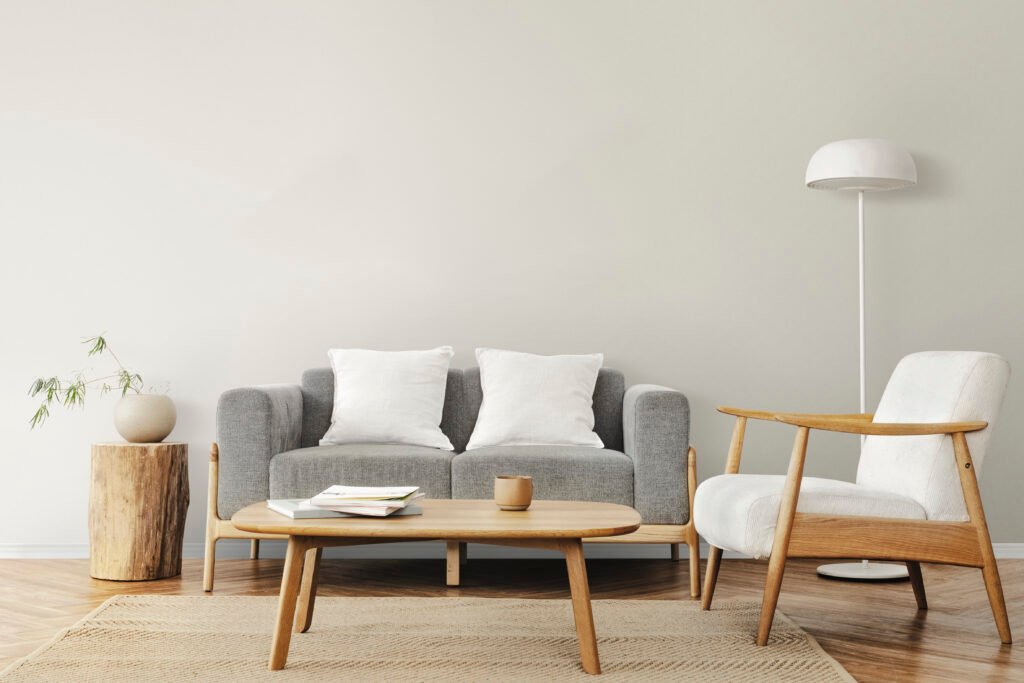
Material counts. Opt for wood for warmth, metals for an industrial look, or glass and acrylic for a light, almost invisible presence. Whites or off-whites in an upholstery setting are a good call, but think about easy-to-clean material, particularly if you have children or pets. Choose performance fabrics, slipcovered sofas and chairs, or leather. All are functional options that are not lacking in style.
Add the finishing touches with accents. Consider decorative bowls, coffee table books, vases with texture, or artwork. Limit the amount used, but make them impactful. One large, black and white or light-hued piece of art can be an impactful contrast with the rest of the space.
In the end, furnishings and accessories for a modern white living room need to enhance the sense of lightness and serenity in the space. Select which pieces resonate with you personally, but also keep them within your calm, light tone.
Conclusion
Designing a modern white living room is about more than color. It is about creating a space that reflects your personality, supports your lifestyle, and nurtures your sense of calm. White, when used thoughtfully, becomes a canvas that opens up a world of creative possibilities. It allows you to experiment with contrast, texture, and accents in a way that no other color does.
Begin by considering the ambiance you desire your living room to have. Do you want a clean-lined retreat in which to relax at the end of a stressful day? Or do you want a bright place that is open and refreshing? With a base of white, you can head in any direction or combine both. It is a color that responds to your disposition, your furnishings, and even the moment of the day as the light from nature changes.
White rooms also hold up well over time. While strong color fads can look dated after a couple of years, white possesses an enduring quality that will always look fresh with minimal updates. Replacing accent pillows, throws, or art objects seasonally can give your space a fresh look without needing a complete do-over.
Whether you are a beginner or simply rejuvenating your space with a fresh makeover, unleash the power of the color white to build a living room that is homey, emotive, and distinctly yours.
Frequently Asked Questions (FAQs)
Q1: How do I keep a white living room clean?
A: Use washable paint finishes and slipcovered furniture for easy maintenance. Vacuum regularly, and spot-clean spills immediately to prevent stains. Consider performance fabrics designed to resist dirt and wear.
Q2: How can I add color without disrupting the white theme?
A: Add color through accessories like cushions, throws, vases, or artwork. Soft pastels or nature-inspired tones like sage green and dusty blue work beautifully. Keep them minimal and well-balanced.
Q3: Can a white living room work in a dark house?
A: Absolutely yes, use mirrors to reflect light, choose warmer whites to compensate for dimness, and install layered lighting to brighten the space. Even a north-facing room can feel light with the right approach.
Q4: What wall art works best in a modern white living room?
A: Black and white photography, line drawings, or abstract art in muted tones suit a white space perfectly. Go for pieces with clean lines and simple frames to maintain a cohesive look.
Q5: Are modern white living rooms suitable for families or pets?
A: Yes, With smart choices like stain-resistant fabrics, wipeable surfaces, and darker flooring or area rugs, you can enjoy a white space without stress. Choose durable, family-friendly materials.

